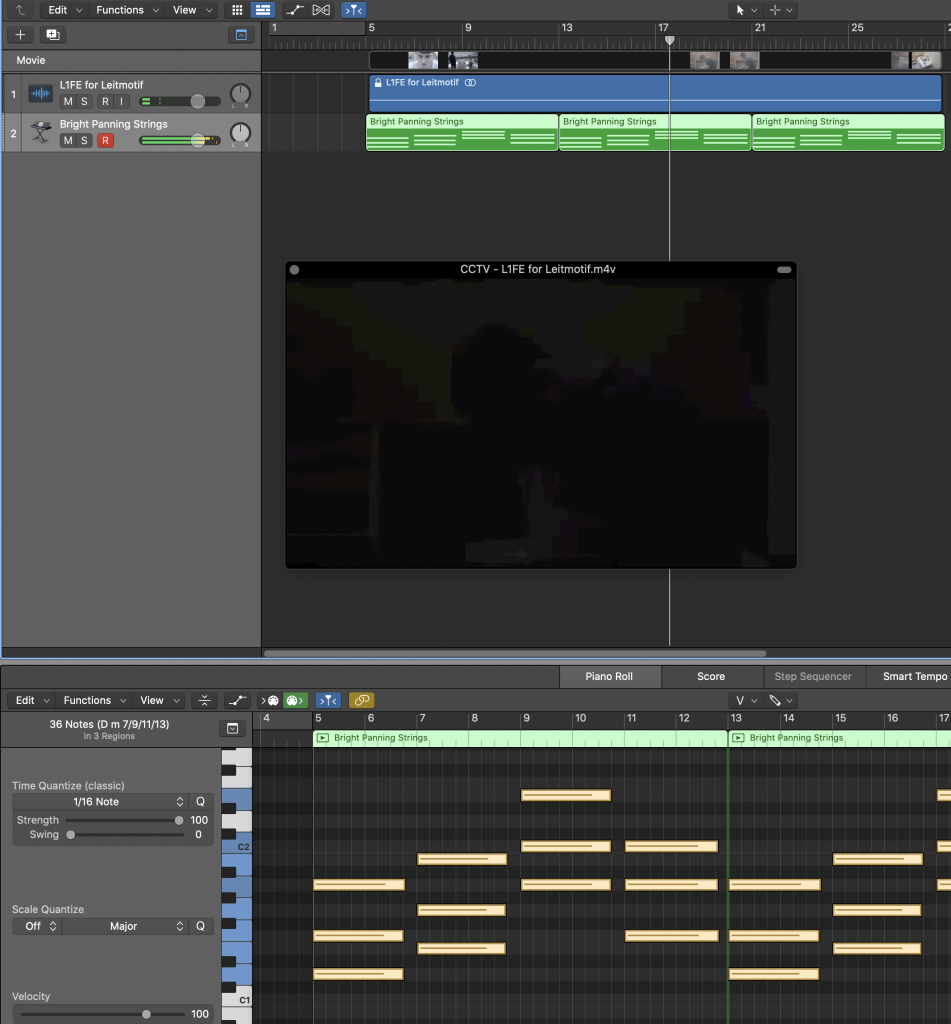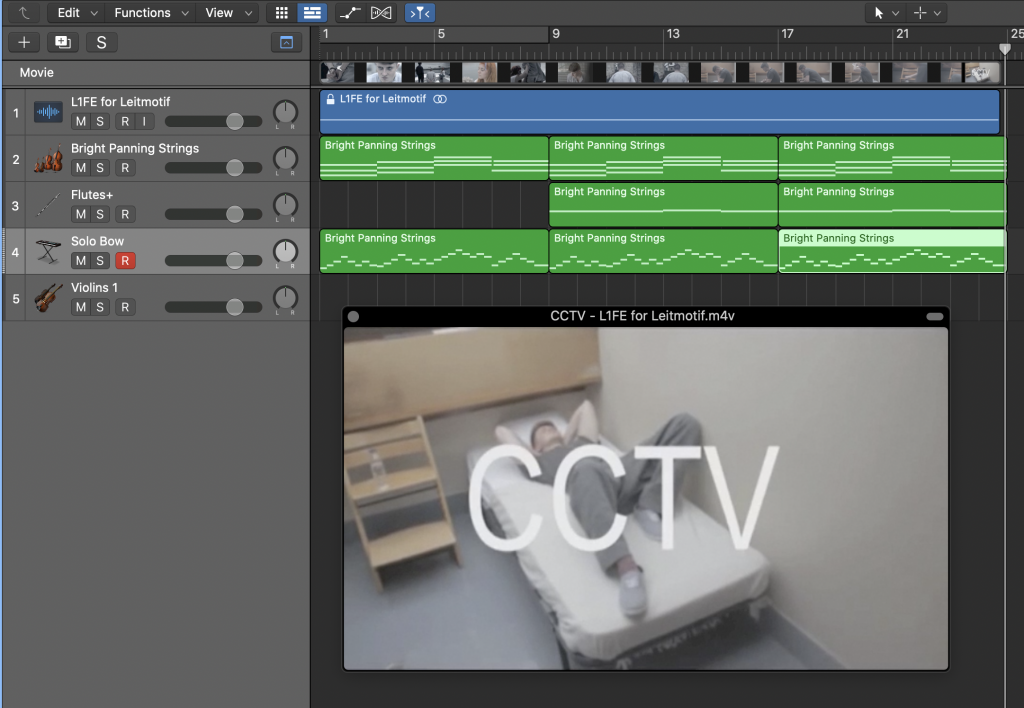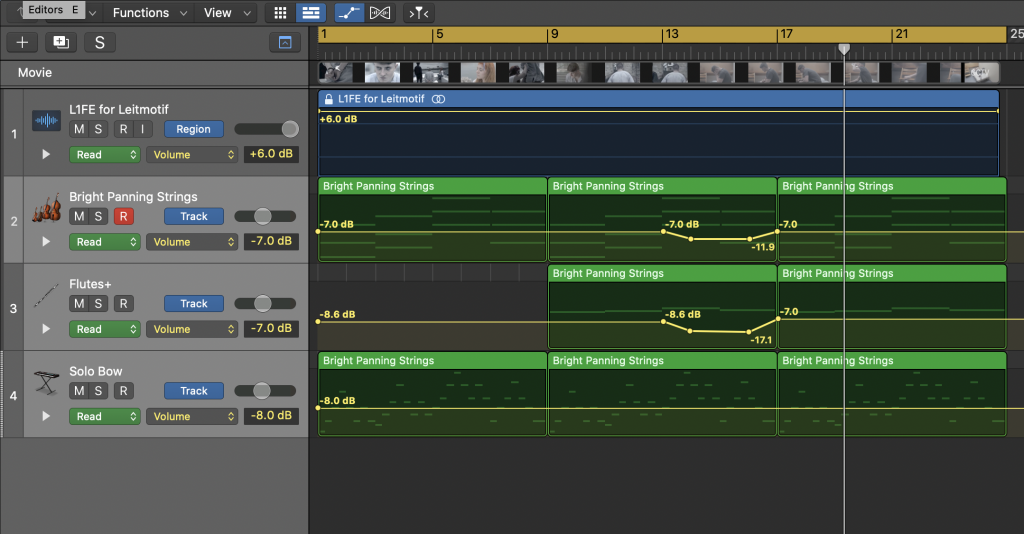Before we can even think about creating our own film scores, we must first understand music’s role within film and the history behind it. For the first two decades of moving image, sound wasn’t included within the film itself, it usually came in the form of live music. This live musical accompaniment served a few purposes, it masked the distracting noise of the projectors, prevented the actors on screen from seeming inhuman, and also helped to convey the emotions of the scenes.
The first movie with synchronised audio and video was The Jazz Singer released in 1927, this was a gamechanger and the precursor to the Golden Age of Hollywood which spanned from 1935-1950 and brought us films such as King Kong, Gone With The Wind, and Citizen Kane. Film from this time is rather recognisable as the scores consisted of orchestral instrumentation. The Golden Age ended with the dawn of the home television.
List of terminology:
- Diegetic – source of music is visible
- Non-diegetic – source of music is not visible
- Leitmotif – A musical theme related to a character which plays to signal significant moments related to said character
- Ostinato – A repeated musical feature
The next lesson involved us analysing famous scenes from film to look at how they utilise scores or even pop songs to enhance the scene, and thus the film. To sum briefly, we found that Back to the Future used the pop song to emphasise Marty McFly’s actions/gestures, Blade Runner made great use of atmospheric scoring to create a dark, moody, dystopic sense to what is on screen, and Jurassic Park included grandiose scores to help the audience share that sense of wonder which the protagonists feel when first seeing the dinosaurs.
The main piece of work for this area is composing two original scores for two short scenes. We must take what we’ve learnt already and implant those ideas and concepts into our pieces, taking into account what instrumentation we choose, what emotions we want to convey and how the music will impact a viewer.

The first scene I set to working on followed a prisoner being taken to an island and led to his cell, going from boat, to dock, to said cell. I felt it to be solemn and without much hope, and, using the minor pentatonic scale, I chose a simple string melody as the base.

I then moved on and added some additional sections. A higher flute line which follows the original melody comes in which I feel makes the scene a bit more unsettling, which I did because part of the plot involves a mind control drug being put into the water – certainly an unsettling idea. I also added a bow melody just to up the pace of the score and keep things moving, as it felt a little too idle at first. The introduction of this melody helps to add momentum to the scene.

As the scene involves some brief dialogue, I used the automation tool to boost the volume of the original scene, and to decrease the volume of the score when the dialogue needed to be heard; I did however keep the bow at a steady volume to keep that momentum in the scene.
I believe I came up with a suitable, if somewhat simple, score for this scene. I chose fitting sounds and an interesting combination comes together as the piece progresses, but it doesn’t take centre stage as I wanted the focus on the scene. However, I would say that the mix could’ve been completed in a cleaner way; the dialogue of the scene is somewhat drowned out by the music which isn’t ideal. It may fit in a Christopher Nolan film where he intends on making the audience listen more closely for the dialogue but, alas, this was just subpar mixing on my part. In future I should pay more attention to the dialogue in the mix, using automation to a better extent, especially when I aim to put the scene before the score.

Similar to the first score, I wanted to keep a very steady pace as the scene was of a slow tempo. Instantly, I thought of a simple chord pattern in the C minor pentatonic scale which ascends and descends. A simple base to set me up for the other instruments to come in over.

Next I added another instrument to help fill out the piece, making it feel much more full-blooded, but only coming in sometime later so that there is a constant and repetitive composition throughout. I also added an arpeggiated secondary piano section just to add some more motion without adding too much, just enough at the start of each two bars to achieve the effect which I aimed for.

Finally I altered the automation to the Sci-Fi Communications instrument would rise over time to very steadily increase the intensity of the piece as it progresses, whilst not overpowering the piano parts. In this scene there isn’t any dialogue so that isn’t something I needed to concern myself with.
For this piece, again it was simple but (I think) effective. I followed a similar process to the prior composition and and kept the mix down to only a few instruments, partly due to not wanting to overcomplicate things beyond my ability and partly due to time constraints. Like before. what worked well for me was the simplicity and understanding that I don’t need vast sounds; the scene is a scene of loss and feels rather empty so I would say it is fitting that the score mirrored that. That said, with there being no dialogue, I had more freedom to play with the sounds I used and, while I did want to keep things sparse, another instrument could’ve helped to add interest. I believe I could also change my process to prevent my compositions sounding too alike.
Scoring film was a tough process and, truthfully, I’m not best pleased with how the end result came out for both compositions. I think my lack of music theory knowledge and my lack of strong interest in the scoring world didn’t help me, as it didn’t lead me to give my best performance. I did what I could and I think that the results aren’t bad, they’re just not as good as I feel that they could’ve been.
I don’t picture myself following on from this project as it hasn’t grabbed me. Whilst I do think I could create something much more interesting if I gave it another attempt, film scoring isn’t something that has my attention unfortunately; I enjoyed learning about the history of film music more than the creation of my own.